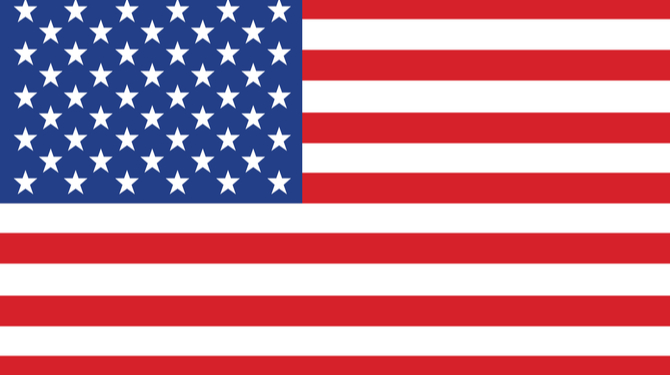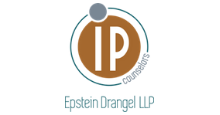
United States
Anti-counterfeiting
Introduction
The U.S. has a wide range of federal and state laws and regulations available to IP owners. The Lanham Act, 15 U.S.C. §§ 1051 et seq., was enacted in 1946, and today defines U.S. federal trademark protection and registration rules, among other things. Unlike patents and copyrights, which are governed exclusively by federal law (although invoked by IP rights holders less frequently), individual states have also passed their own laws and regulations pertaining to trademark protection and registration. The Lanham Act provides IP owners with a wide array of enforcement claims to pursue, namely:
- trademark infringement;
- counterfeiting;
- federal unfair competition (including false advertising and false association);
- dilution; and
- cybersquatting.
While there have been considerable changes to the Lanham Act aimed at bolstering trademark owners’ rights and enforcement mechanisms, the most recent changes came with the Trademark Modernization Act of 2020 (TMA), which went into effect on December 18, 2021. The TMA gave U.S. federal trademark applicants and registrants new tools to clear the federal register of unused trademarks, reduce the number of fraudulent trademark registrations, and notably for this treatise, codified the evidentiary burden for injunctive relief in trademark infringement and counterfeiting claims to allow for a rebuttable presumption of irreparable harm upon a showing of infringement or likelihood of success on the merits.
Additionally, early in 2022, the U.S. House of Representatives passed the America COMPETES Act of 2022 (ACA), a bill containing a version of the SHOP SAFE Act of 2021 (SSA), which would amend the Lanham Act to expressly establish contributory trademark infringement liability for e-commerce platforms for sales of counterfeit products that pose a risk to consumer health and safety unless the platforms implement certain best practices, such as:
- verifying (through government ID or other reliable documentation) the identity, principal place of business and contact information of the third-party sellers on the platforms;
- conspicuously displaying the verified place of business, contact information, and identity of third-party sellers, as well as the country of origin and manufacture of the goods, and the location from which the goods will be shipped;
- terminating accounts of third-party sellers who have offered or advertised counterfeit goods on more than three occasions;
- requiring sellers to contractually agree not to sell or promote counterfeit goods; and
- requiring sellers to contractually consent to the jurisdiction of United States courts with respect to claims related to the sellers’ participation on the platform.
The ACA also contains The INFORM bill, which would similarly require platforms to collect identifying information like government ID and tax ID from "high-volume" third parties that sell on their platforms, defined as those who make more than 200 sales amounting to $5,000 or more in a year. While the INFORM Act and SSA have similar requirements, the purpose is slightly different, with INFORM focused on promoting product safety for consumers and the SSA focused on thwarting the distribution of counterfeits on the platforms. Neither Act would create criminal penalties, but would impose civil ones.
These further amendments to the Lanham Act, if enacted, will potentially make platforms contributorily liable and increase obligations to vet their sellers more substantially, which hopefully will curtail online counterfeiting to some degree. Moreover, requiring foreign sellers from countries that are known for substantial counterfeiting activities, such as China, to submit to the jurisdiction of U.S. courts, could deter them from engaging in unlawful conduct, give trademark owners better recourse and provide a more efficient means of service of process (potentially e-mail, messaging and publication) rather than the lengthy and costly requirements of the Hague Convention.
1 . Criminal prosecution & civil enforcement
Before even considering the various civil and criminal counterfeit enforcement options, it is critical for an IP owner to have all their rights properly defined and protected. This typically requires the assistance of a skilled intellectual property attorney, who assesses a client’s business by reviewing its portfolio of goods and services. Once reviewed, care should be taken to register the relevant IP rights, namely, trademarks, copyrights and patents. Specifically, in order to pursue counterfeit enforcement civilly, criminally, through U.S. customs or by using e-commerce platforms and domain name host/registrar intellectual property enforcement tools, it is a prerequisite to own a trademark registration on the USPTO’s Principal Register covering the trademark and the goods/services being counterfeited. As it could take a year or more to obtain registrations, it is best to pursue the rights as soon as practicable. Once obtained, the registrations can, and should, be recorded with Customs, and, to the extent possible, with e-commerce platforms such as Amazon’s Brand Registry.
1.1. Criminal prosecution
The Trademark Counterfeiting Act, 18 U.S.C. § 2320 (TCA) is the primary federal criminal law involving counterfeiting, and was enacted in 1984 to amend the federal criminal code to make it a federal offense to violate the Lanham Act by the unauthorized or intentional use of a counterfeit trademark.
Criminal proceedings typically involve violations of the TCA, which relates to trademark counterfeiting only, and are most often brought in federal courts. Counterfeiting rises to the level of a criminal offense when it involves an intent to defraud in passing off the counterfeit item. Prosecutors often combine other charges when prosecuting the TCA, including criminal conspiracy under 18 U.S.C. § 371, mail fraud under 18 U.S.C. § 1341, wire fraud under 18 U.S.C. § 1343, money laundering under 18 U.S.C. §§ 1956-1957, violations of the Racketeer Influenced and Corrupt Organizations Act (“RICO”) under 18 U.S.C. §1961, among other federal and sometimes state charges. In addition to the TCA, there are also corresponding state statutes, which have similar burdens of proof and thresholds for liability.
To assert a criminal offense under the TCA, the government must prove the following elements:
- that the defendant intentionally trafficked, attempted or conspired to traffic in goods, services, labels, patches, stickers, wrappers, badges, emblems, medallions, charms, boxes, containers, cans, cases, hangtags, documentation, or packaging of any type or nature;
- that the defendant knowingly used or applied a counterfeit mark likely to cause mistake, confusion or deception; and
- that the mark is counterfeit pursuant to 18 U.S.C. § 2320(f).
The cooperation of the trademark owner is necessary to prove both the validity of the owner’s trademark rights and that the goods being sold are not genuine.
The penalties provided under the TCA are:
- for an individual’s first offense, a fine of up to $2,000,000 or imprisonment for up to 10 years, or both, and for an entity, the fine increases to not more than $5,000,000; or
- for an individual’s second or subsequent offense, a fine of up to $5,000,000 or imprisonment for up to 20 years, or both, or for an entity, a fine of not more than $15,000,000.
Under Section 2320(c) convicted counterfeiters are typically ordered to reimburse victims of their crimes (including the trademark owners). Law enforcement authorities will also seize the counterfeit goods during the investigations, and will destroy or otherwise dispose of the counterfeit goods after convictions.
1.2. Civil enforcement
In the U.S., civil enforcement remedies for counterfeiting are provided by the Lanham Act, and such cases are litigated in U.S. federal courts since the Lanham Act is a federal statute. Counterfeiting cases, distinct from trademark infringement cases, both of which arise under the Lanham Act, involve “counterfeit marks” (i.e., spurious marks that are identical with, or substantially indistinguishable from, registered marks). In order to be eligible to bring a counterfeiting claim, the trademark must be registered with the USPTO. Owners of registered marks may also bring an action for trademark infringement under 15 U.S.C. § 1114, or absent a registration, infringement of unregistered marks and/or federal unfair competition under 15 U.S.C. §1125(a). In order to prevail on a trademark infringement or counterfeiting claim, the plaintiff has the burden of proving that it owns a valid and legally protected mark, and the defendant’s use of the mark causes a likelihood of confusion.
While for trademark infringement and unfair competition a plaintiff is eligible to seek its actual damages as well as the infringer’s profits and costs (including enhanced discretionary damages) under 15 U.S.C. § 1117(a), counterfeiting provides certain heightened damages remedies. Specifically, in the case of willful counterfeiting, treble damages or in lieu of actual damages and profits, a rights holder is able to seek statutory damages of up to $2,000,000 per counterfeit mark per type of goods or services sold, offered for sale or distributed (or up to $200,000 if willfulness cannot be shown). Attorneys’ fees can also be sought, and will be awarded if there is a finding that a case is “exceptional”. In addition to monetary compensation, rights holders can also seek injunctive relief, including ex parte relief on an expedited basis. Recently, the TMA codified the presumption of irreparable harm for trademark owners, and thus, makes it easier to obtain injunctive relief in trademark infringement and counterfeiting actions. In addition, rights holders can seek (and obtain), seizure, asset freeze and destruction orders. (See 15 U.S.C §§ 1116, 1118.)
1.3. Grey market and counterfeit goods
U.S. case law involving the distribution and/or sale of counterfeit goods is robust, and always evolving. For example, in 2021, the Second Circuit, in Omega SA v. 375 Canal, LLC, 984 F.3d 244 (2d Cir. 2021), revisited the issue of contributory liability for landlords, and affirmed a jury verdict finding that the defendant landlord was contributorily liable. The Second Circuit shed further light on its Tiffany decision, and confirmed that actual knowledge “of a specific infringer” is not required in all cases, but instead, wilful blindness is sufficient, including the landlord’s “history of turning a blind eye toward counterfeiting at 375 Canal Street” and “insufficient steps to root out the counterfeiting it knew or should have known was occurring”. (Id. at 254-255.) Also in 2021, the Sixth Circuit, in Ohio State Univ. v. Redbubble, Inc., 989 F.3d 435 (6th Cir. 2021), overturned summary judgment in favor of the print-on-demand online marketplace, Redbubble, and analyzed the spectrum of marketplace liability (i.e., brick-and-mortar locations on one side, and certain passive online marketplaces on the other). Ultimately, it found summary judgment improper because Redbubble was more than a mere facilitator of sales, given, among other things, the products were delivered in Redbubble packaging and with Redbubble tags.
One area of the law that is constantly expanding is the issue of grey market goods (i.e., “a foreign-manufactured good, bearing a valid United States trademark, which is imported without the consent of the United States trademark holder”). K Mart Corp. v. Cartier, Inc., 486 U.S. 281, 285(1988). Under U.S. law, grey market goods are permissible so long as they are not “materially different” from the goods sold in the U.S. Thus, much of the case law surrounding this issue focuses on what constitutes a material difference. See, for example, Dan-Foam A/S & Tempur-Pedic, Inc. v. Brand Named Beds, LLC, 500 F. Supp. 2d 296 (S.D.N.Y. 2007) (collecting cases exemplifying what constitutes a material difference, including differences in packaging, warranty protection and quality control procedures). To the extent a material difference is found, a rights holder may seek the remedies provided under the Lanham Act for trademark infringement; however, criminal penalties generally cannot be imposed. See United States v. Cone, 714 F.3d 197 (4th Cir. 2013); and 18 U.S.C. § 2320(e)(1)(B (“authorized use” exception). Additionally, U.S. Customs and Border Protection has the authority to prevent the entry of goods that are found to constitute grey market goods, and the U.S. International Trade Commission is able to grant exclusion orders blocking the importation of such goods.
Aside from the Lanham Act and criminal counterfeiting, there are a litany of regulations in the United States, which are intended to protect consumers from the hazards of counterfeit goods. For example, the U.S. Consumer Product Safety Commission administers and enforces laws relating to products that pose safety concerns, the Food and Drug Administration issues and enforces regulations relating to food, drugs, cosmetics, etc., and the Federal Trade Commission enforces laws pertaining to the prevention of fraud, deception and unfair competition, including, but not limited to, marketing and product labelling.
1.4. Criminal v. civil enforcement
Decisions on how best to pursue a counterfeiter are quite complex, and most often require a multi-prong approach, including several of the measures explained herein. Before making a decision to pursue a matter civilly, a rights holder will typically first conduct their own private investigation of the counterfeiter (internally or using a private investigator or third-party online enforcement service) by conducting background research, surveillance, and/or purchases. Enforcement efforts, especially those involving the Internet, can be complicated by an infringer’s ability to hide behind fake aliases or domain register privacy settings, which not only make the pursuit of infringers difficult, but also the collection of any monetary judgment that may be rendered.
Criminal prosecution has benefits (including serious penalties for counterfeiting), and it is less expensive for a rights holder than bringing a civil litigation since it is initiated by the government. However, some of the challenges associated with criminal enforcement include higher burdens of proof (including proving that the counterfeiting was intentional) and relying on law enforcement officials (which can severely delay the action, as counterfeiting is typically given a low priority as compared to other criminal offenses).
2 . Border enforcement
2.1. Measures
United States Customs and Border Protection (CBP) is the main federal agency responsible for handling counterfeit goods at U.S. borders. CBP has the statutory authority, pursuant to 19 CFR § 162.6, to search “all persons, baggage and merchandise” that arrive in the United States and may rely on various other authorities to stop and prevent the trafficking of counterfeit goods. CBP has the authority to “detain, seize, forfeit, and ultimately destroy merchandise seeking entry into the United States if it bears an infringing trademark…that has been registered with the United States Patent and Trademark Office (USPTO)…,” and has thereafter been recorded with CBP via its e-Recordation Program. An intellectual property right owner has the ability to record its registered trademarks with CBP at https://iprr.cbp.gov, which CBP will rely on in providing border enforcement and identifying counterfeit goods.
Pursuant to 19 CFR § 133.21, when CBP suspects that goods are counterfeit, the goods are detained for up to thirty (30) days, during which time CBP will determine whether to formally seize the goods. Within five business days from the date of decision to detain suspected infringing merchandise, CBP will notify the importer of the detention. During the detention period, rights holders are advised of limited importation information (i.e., the country of origin, the date of importation, the port of entry, a description of the merchandise and the quantity of merchandise detained) so assistance may be given to CBP in determining whether the imported goods bear a counterfeit mark. If a formal seizure occurs, rights holders are additionally given the names and addresses of the manufacturer, exporter and importer.
Customs recordation is an excellent and cost-effective tool that brand owners can use to prevent counterfeit goods from entering the U.S. CBP expends substantial resources on minimizing counterfeit goods, including by monitoring targets, intercepting shipments and bearing the costs of destroying counterfeit goods. The initial fees for brand owners are minimal, especially in comparison to the costs associated with destroying counterfeit goods that brand owners are responsible for in many other countries. One downside is that CBP officers cannot inspect each and every package that arrives and therefore some unauthorized and counterfeit goods still make it into the country.
In 2020, the U.S. Government Accountability Office (GAO) was tasked with reviewing IPR enforcement practices in advanced economies, and the extent to which CBP could implement those practices. The primary issue that GAO found that spans across jurisdictions is that smaller packages are often overlooked. GAO recommended that CBP take steps to develop a streamlined enforcement approach against counterfeit goods in small packages and CBP concurred. Implementing these steps will allow CBP to stop parties that were taking advantage of the misconception that CBP does not routinely inspect small parcels. In 2021, CBP announced a partnership with the US Chamber of Commerce, which seeks to enhance the exchange of information concerning known or suspected intellectual property rights violations, and will involve joint training and outreach events to improve public awareness of efforts to disrupt the trade in counterfeit and pirated goods.
In accordance with 19 CFR § 133.61, CBP routinely provides brand owners or their authorized agents with seizure notices that include information such as: the description of the property that was seized, the trademark at issue, the name and address of the importer, exporter and manufacturer if available. This information can be used to further investigate the counterfeiters and determine if a factory abroad is producing counterfeits, the nature of the importing party’s business in the U.S., if they frequently ship goods here, etc. Such information often leads brand owners to sending cease and desist letters or further pursuing the parties in court.
Once counterfeit goods have been determined as such, and are seized, forfeited, destroyed, or otherwise disposed of in accordance with 19 U.S.C. § 1526(e), civil monetary fines may also be imposed. Under 19 CFR § 133.27, CBP has the authority to impose civil fines on any person who directs, assists or aids and abets the importation of counterfeit merchandise that is seized. For a first-time seizure of merchandise, the fine will not be more than the value the merchandise would have had if it were genuine. For the second, and each subsequent seizure thereafter, the fine will not be more than twice the value the merchandise would have had if it were genuine. Counterfeiters are also subject to both civil enforcements, if rights owners choose to file such lawsuits, and criminal prosecution as discussed in Section 1. Criminal prosecution & civil enforcement.
Beyond recordation, intellectual property right owners may provide CBP with supplemental information and resources to aid in its identification of counterfeit goods, such as product identification guides, in-person product identification training, live online training introducing the brand and describing the intellectual property rights and partnerships with the Centers of Excellence and Expertise (see www.cbp.gov/trade/priority-issues/ipr/protection). These methods allow brands to educate CBP officials, which helps to increase CBP’s success rate of identifying counterfeit products.
2.2. Recent trends and COVID-19
Every year CBP seizes millions of counterfeit goods, including fake versions of popular products, such as smartphones and related accessories, electronics, apparel, shoes, cosmetics and high-end luxury goods. In 2020, CBP reported that 26,503 shipments containing counterfeit goods were seized. The total estimated manufacturer’s suggested retail price (MSRP) of the seized goods, had they been genuine, was over $1.3 billion. Handbags and wallets accounted for 17% of all seizures, totaling 4,597 seizures with a total MSRP value of $282 million. Representing 33% of the total 2020 seizures, watches and jewelry were the top products seized in terms of total MSRP value, with seizures valued at over $435 million.
Since the start of the COVID-19 pandemic, CBP has seized “a large number of counterfeit, unapproved or otherwise substandard personal care and pandemic-related products that threatened the health and safety of American consumers”. In 2020 alone, such seizures included 177,356 Food and Drug Administration-prohibited COVID-19 test kits in 378 incidents; 12,709,390 counterfeit face masks in 352 incidents; and 38,098 Food and Drug Administration-prohibited chloroquine tablets in 221 incidents. Another trend in goods seized during the pandemic was counterfeit COVID-19 vaccination cards. According to a September 2021 CBP statement, CBP officers in Chicago, Memphis and Anchorage, Alaska seized upward of 6,000 counterfeit vaccination cards, as well as a number of counterfeit provider specific inoculation stickers.
3 . Online anti-counterfeiting enforcement strategies
With the prevalence and rapid expansion of online marketplaces and e-commerce websites, online counterfeiting has become rampant; however, much to the dismay of brand-owners, the enactment of legislation specifically addressed to combat the same has been a long, arduous process that has not yet fully come to fruition. As it currently stands, brands are able to seek largely the same remedies against both offline and online infringers. The Lanham Act does not specifically address online trademark infringement or counterfeiting, the circumvention of technological measures (like the Copyright Act does, see 17 U.S. Code § 1201), or the manufacture, importation and sale of technologies, devices and services designed primarily for the purpose of breaking digital locks. In addition to pursuing online infringers civilly, an IP rights owner should proactively monitor and remove infringements using IP enforcement tools provided by many online service providers. While these activities are time consuming, potentially costly (especially if required to retain third-party takedown services if the scope of the infringement warrants as such), and frustrating due to the temporary nature of such a solution in many cases, it is important to include the take down work as part of an overall brand protection strategy.
Third-party e-commerce service providers that facilitate the sale of counterfeit goods may be held liable under the theory of secondary liability. See Tiffany (NJ) Inc. v. eBay Inc., 600 F.3d 93, 106 (2d Cir. 2010) (holding that an online service provider can be held liable if it intentionally induces another to infringe and continues to supply its services to a third party it has reason to know is partaking in trademark infringement, but declining to hold eBay liable). Nevertheless, partly in light of what has been interpreted as the Second Circuit’s stringent knowledge requirement (i.e., generalized knowledge is insufficient) in the watershed Tiffany case—although not binding on all circuits—the burden of identifying infringements has largely remained on rights holders. This being said, while case law has evolved since Tiffany, and varies by circuit in the United States, such that some third-party service providers have been held accountable for trademark infringement in certain cases (see, for example, H-D U.S.A., LLC v. SunFrog, LLC, 311 F. Supp. 3d 1000 (E.D. Wis. 2018)), there are several pieces of pending legislation that could change the landscape for rights holders. For example, as addressed above in the Introduction, the SSA, which explicitly establishes contributory liability for third-party platforms through which counterfeit products posing health and safety concerns are sold, could make online marketplaces liable for any injuries or damages suffered from such products.
In light of the complexities posed by infringement occurring online, including, but not limited to, the ability of infringers to use fake aliases or hide behind cloaks of anonymity, the best approach for combatting infringements will often be dictated by the scope of the infringement. For online infringers that also have physical storefronts and/or warehouses, on the ground efforts may be wise, such as engaging investigators to the physical locations to assess the extent of the infringement. If there are large quantities of counterfeit goods involved, the potential for on the ground raids and seizures of infringing goods may be possible. In a similar vein, in the online context, the seizure of assets and the suspension of online storefronts is possible by seeking temporary restraining and preliminary injunctions.
3.1. Domain names
When a dispute over a domain name occurs, a trademark owner has options, including commencing a lawsuit under the Anti-cybersquatting Consumer Protection Act 15 U.S.C. § 1125(D) (ACPA) in federal court or filing a complaint pursuant to the Uniform Domain Name Dispute Resolution Policy (UDRP).
Under the ACPA, a trademark owner may bring an action against a domain name registrant, who has a bad faith intent to profit from the owner’s trademark, and registers, traffics in, or uses a domain name that is identical or confusingly similar to a distinctive or famous mark. If successful in bringing a claim under the ACPA, a court can order the forfeiture, cancellation or transfer of the infringing domain name. 15 U.S.C. § 1117(D)(1)(c). A mark owner may also obtain injunctive relief, and can elect to recover either his or her actual damages or statutory damages between $1,000 and $100,000 per infringing domain. (15 U.S.C. § 1117.)
The UDRP was designed to provide a relatively quick, low cost and streamlined alternative to initiating a lawsuit; however, the only remedies available under the UDRP are cancellation of the infringing domain name or transfer of the infringing domain name to the trademark owner. In a UDRP proceeding, a trademark owner must prove:
- the domain name is identical or confusingly similar to the owner’s trademark;
- the domain registrant does not have any rights or legitimate interest in the domain name; and
- the domain name has been registered and is being used in “bad faith”.
Since the start of the COVID-19 outbreak, the number of COVID-19 related domain names registered has skyrocketed. From January through October 2020, the World Intellectual Property Organization Center (WIPO) handled 3,406 cases, or an 11% increase over the same period during 2019. (See www.wipo.int/pressroom/en/articles/2020/article_0026.html.) Some of these domain names host websites dedicated to spreading false information regarding COVID-19 or websites selling counterfeit products and/or false services relating to the pandemic. For example, Gilead Sciences, Inc. filed a UDRP complaint against Main Contact for registering the domain name coronagileadsciences.com, which contained the well-known and famous GILEAD mark. The WIPO Administrative Panel Decision ultimately ordered the domain name to be transferred to Gilead. (See Gilead Sciences, Inc. v. Main Contact, WIPO Case No. D2020-0776.)
3.2. Social media
Social media platforms such as Facebook, Instagram and TikTok have become a hotbed for promoting and distributing counterfeit goods. Each platform has a tool to report counterfeit goods and other IP violations. Like e-commerce platforms though, these platforms have largely skirted liability for direct or contributory infringement; however, to the extent they engage in e-commerce (which they all do to a degree), they may be liable in the future if the SAS is enacted.
With the increased hype around NFTs, there has been a surge in the creation of platforms where solely NFTs are available, such as Opensea. NFTs are also being marketed via traditional social media platforms. With this excitement comes an increase in the unauthorized use of IP rights in connection with NFTs. More reputable platforms have established notice and takedown mechanisms; however, enforcement may not be immediate for trademark infringement where the goods/services registered under the mark are not at issue. In the same vein, we are seeing more and more brands participating in other digital goods and trying to find their footing in the augmented and virtual reality space. This has caused other parties to try to beat rights owners at offering their products/services in these digital realms. At this juncture, rights owners are relying primarily on pre-existing trademark registrations for enforcement where applicable, but at the same time, rushing to file for trademarks to cover products/services in the digital space.
4 . Additional information
Founded in 2000, the National Intellectual Property Rights Coordination Center (IPRC) is the central prosecutorial authority in the U.S., comprised of over 19 U.S. government investigative and regulatory agency partners, including U.S. Customs and Border Protection and the Federal Bureau of Investigation. The IPRC uses the unique expertise of each of the member agencies to share information, manage and coordinate investigations and provides assistance to federal, state, local and international law enforcement agencies. It is unclear how effective the IPRC is, given that most of the actual work is conducted by the government agency partners and it is not often made public how the information made it to the appropriate agency. However, from our experience, we know that CBP often works alongside trade policy and law enforcement agencies, such as Immigration and Customs Enforcement (ICE), to respond to intellectual property right violations and enforce trade laws. Internationally, CBP works with foreign organizations and governments to strengthen its border enforcement by gathering intelligence to inform its operations. CBP routinely refers cases to other agencies to ensure that criminal activities lead to investigations, arrests and convictions.
3-6 PQE Corporate M&A Associate
Job location: London
Projects/Energy Associate
Job location: London
3 PQE Banking and Finance Associate, Jersey
Job location: Jersey


 Ashly E. Sands
Ashly E. Sands Danielle S. Futterman
Danielle S. Futterman Gabriela N. Nastasi
Gabriela N. Nastasi Jason M. Drangel
Jason M. Drangel Kerry B. Brownlee
Kerry B. Brownlee

